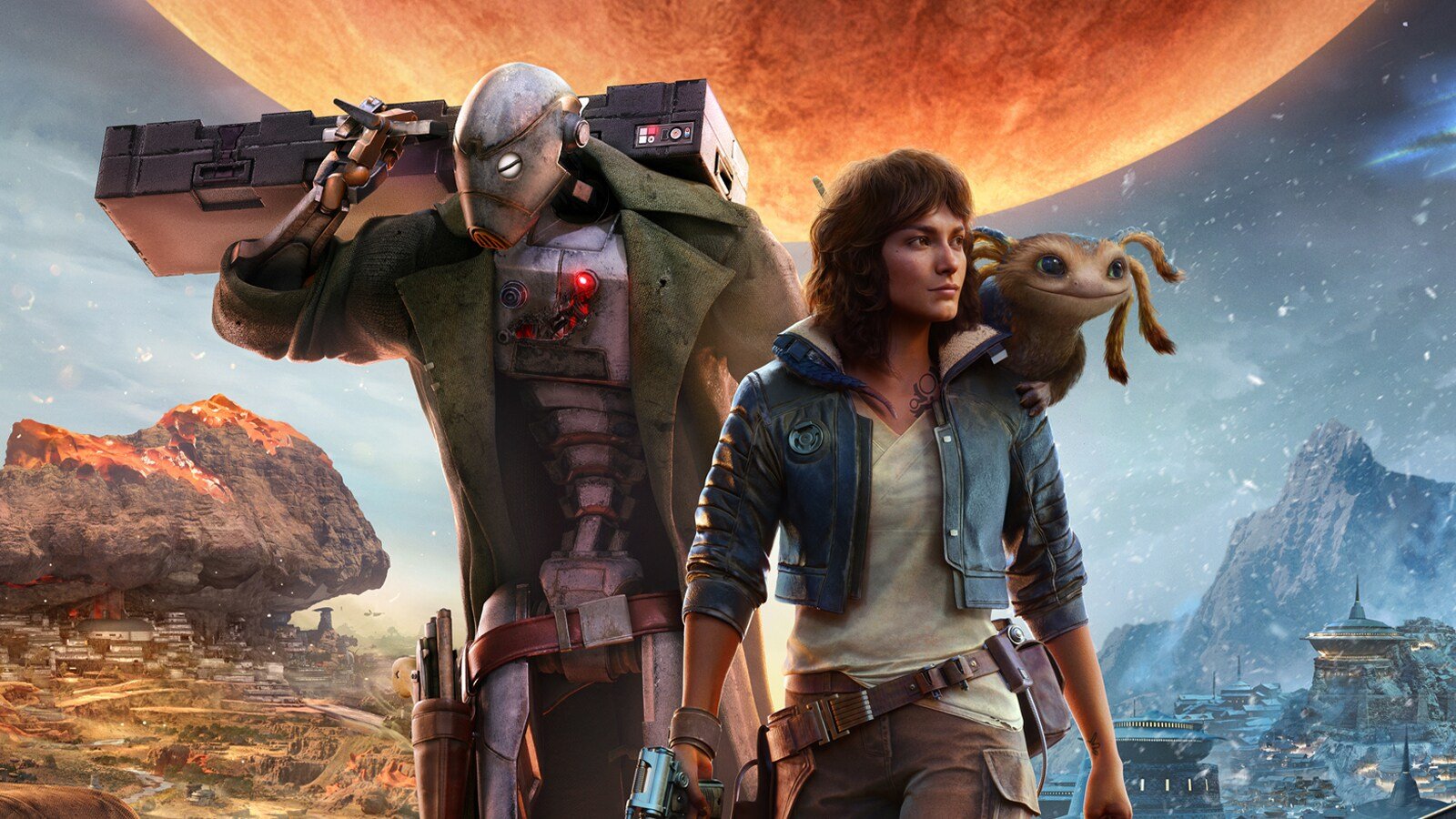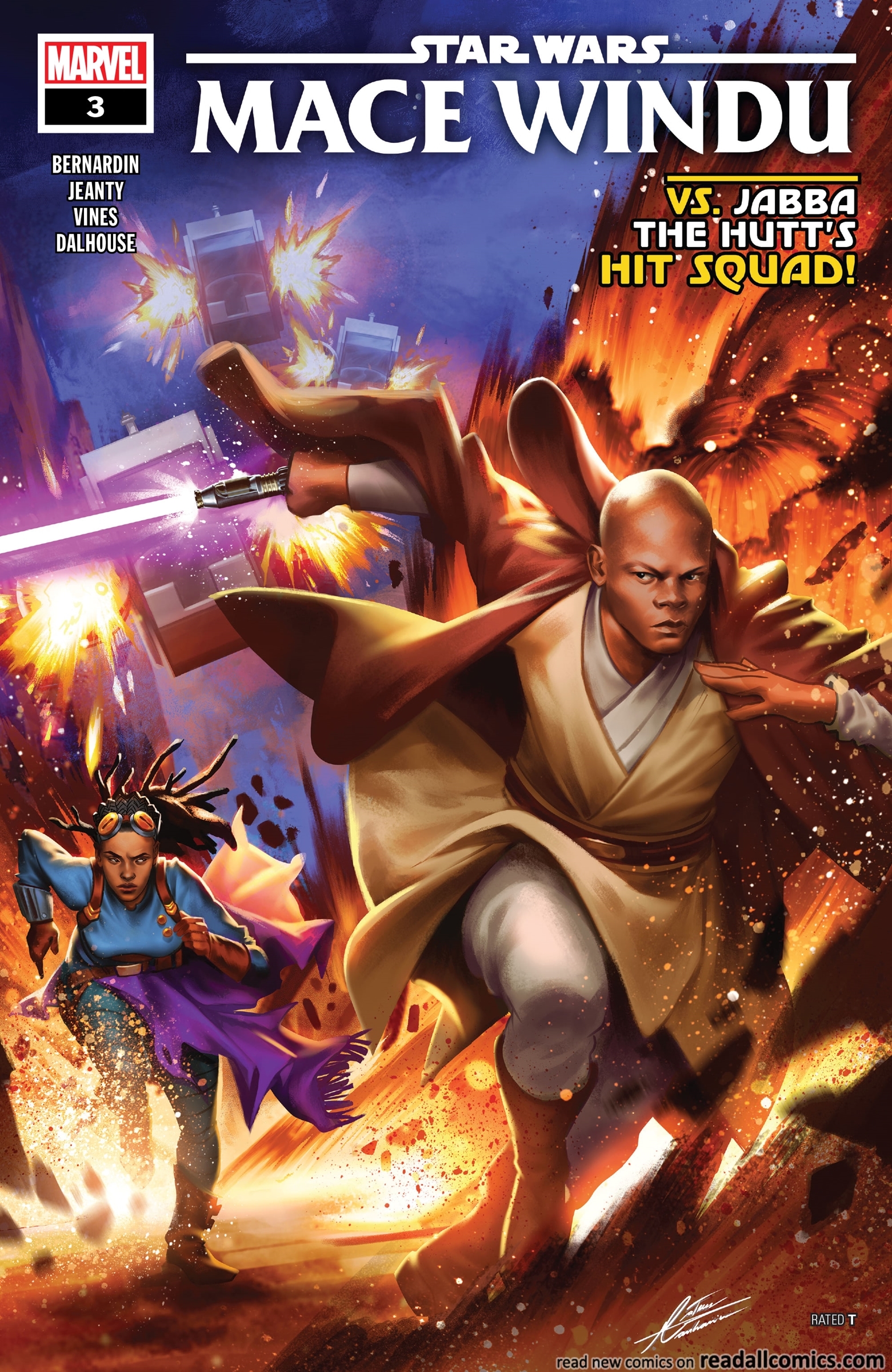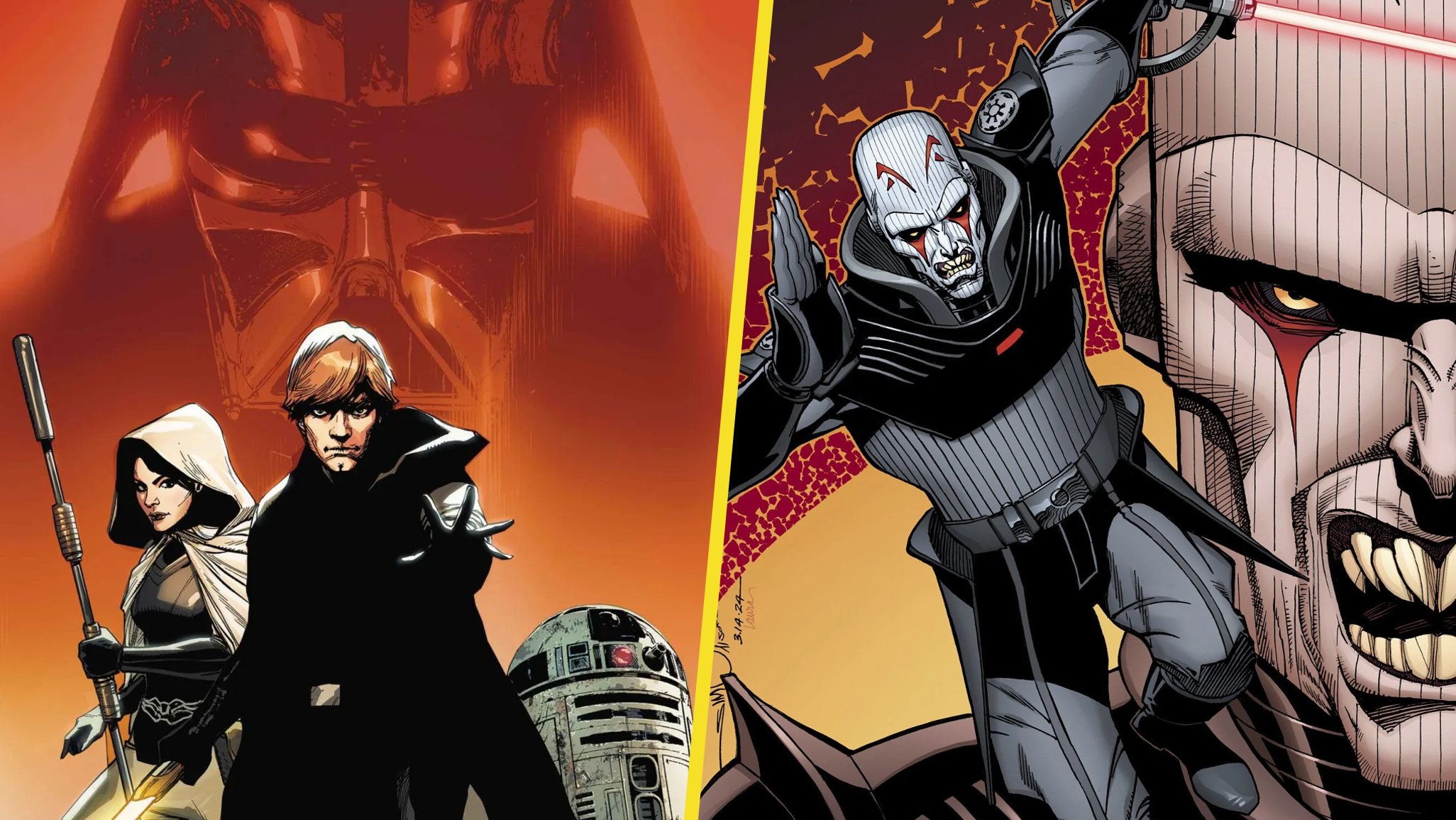Star Trek Picard: S1/E10 Review: ‘Et In Arcadia Ego, Part 2’

Star Trek: Picard has largely been about choices. Picard makes a choice resigning Starfleet that alters his life forever. The Federation makes a choice, banning synths, that leads to catastrophe for the Romulans. The season finale asks Soji to make a choice to save the galaxy. It’s a false choice.
This return to Picard and the Prime timeline has largely been framed as a response to the world we currently live in. While that is certainly true in the set up of the series, the consequences of an isolationist Starfleet closing its doors to refugee Romulans don’t follow logically. Nowhere is that more apparent than in the season finale of the show, in which Picard asks – he begs – Soji not to activate a beacon to call ancient synthetic beings from their interdimensional redoubt.
The Romulans fear these ancient synths, and their threat to all organic life. Don’t be what the Romulans fear you to be, Picard essentially says. Don’t fulfill their stereotypes of you. The problem is that the choice isn’t with Soji; Soji is non-threatening and has a fleet of Romulan warbirds about to turn to her ash. The question needs to be posed to the Romulans. Don’t indulge your fears. Don’t lean on stereotypes. Don’t close off, as we did to you. Open your minds.
Except the show doesn’t do that. It places the burden on Soji, to not be what others fear she might be – but isn’t – and underlines it by characterizing the ancient synths as scary insectoid-like creatures and in a bit of true WTF, puts a remote control in the hand of Alton Soong. He uses it to deactivate Sutra, after discovering she is a villain who killed one of her own. If the synths all come with remotes, then I have some questions about their design, and the logic of the plot.
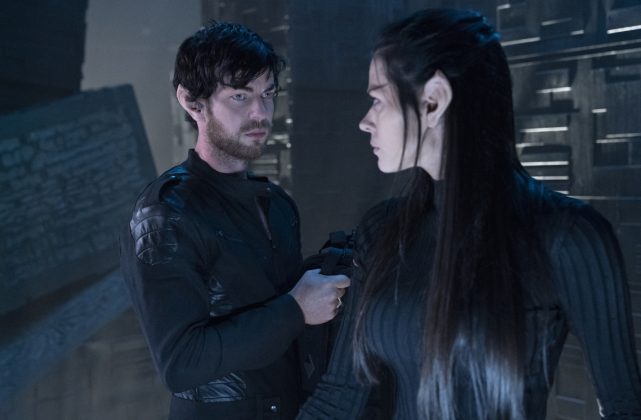
The plot is fairly simple, picking up immediately from last week’s episode. Picard is a prisoner of the synths. Jurati is kind of helping Soong, who is sketchy to say the least, complete an android golem. But not really; she’s trying to help Picard escape. Seven and Elnor are waiting. Narek (yawn) is sneaking into the Borg cube to stop the synths from finishing their beacon. Narissa is doing her best Cersi Lannister impression, still. Raffi and Rios are trying to figure out how to use a Plot Coupon.
All of this leads to a very conventional, if amazingly executed, Climactic Battle Sequence. The episode cuts back and forth like any big Hollywood blockbuster between its different threads: most of the La Sirena crew tries to stop the beacon from transmitting (in a tired revisitation of the Ocean’s 11 heist within a heist bit from the Casino Planet); Picard gets back in the saddle one last time as he and Jurati fly the La Sirena into space to confront the Romulan fleet; Commodore Oh twirls her mustache; Seven and Narissa duke it out on the Borg Cube.
Why Narissa is still there, and what role the cube is meant to play in the battle never becomes apparent. Narissa evidently has some weapons back online, as she seems to be targeting the La Sirena, but those weapons never factor. Rather than build on the dark path Seven has been on in this season, in which she murders some people. Narissa needles her with a question about why Seven just doesn’t put a gun to her head. This comes up out of nowhere in this episode. It doesn’t work. None of the Narek and Narissa business lands, though Narissa does, eventually, after Seven kicks her down a shaft.

After the Romulans destroy the Space Flowers, Starfleet shows up with Captain Riker at the helm. It’s great to see Jonathan Frakes again, and back in command. He gives it to Commodore – or whatever – Oh pretty good. The only disappointing thing about it is that this massive fleet of Federation ships is all the same exact ship. There’s no variety, and no U.S.S. Enterprise-E either.
Picard convinces Soji to deactivate the beacon, at the cost of his life. That’s right. Picard dies. His brain condition accelerates here, and he succumbs, but not before saying goodbye to each of his crew in turn. It’s a moving scene somewhat deflated by the knowledge he must survive this (there’s fifteen minutes left in the show, and season two coming). Picard’s consciousness is salvaged by Jurati and Soong (who sadly is just a jerk, and not Lore, as some have speculated *audible sigh*) and he’s transferred to the golem body. The body is the same age and condition as Picard, save the brain disorder.
There’s a lot here to consider. The choice of reinventing Picard this way is a creative and challenging one. It brings with it certain questions. Number one, this is a guy who has spent time already as a cyborg. He didn’t like it. It doesn’t come up. Why make him the same age (beyond the obvious fact that Patrick Stewart, talented as he is, can’t turn back time)? Why do this at all, if it doesn’t weave together the season’s other major narrative thread?
Before Picard realizes he’s going to survive, he has a lovely encounter with Data in what is essentially the cloud drive on the synth planet. Data’s consciousness was salvaged from his memory engrams, after he transferred them to B-4. Data has been alive, technically, all along. This is a major development that is introduced literally at the last minute, and immediately discarded as Data asks Picard to erase him. He wishes to die, and truly become human by knowing a finite existence.
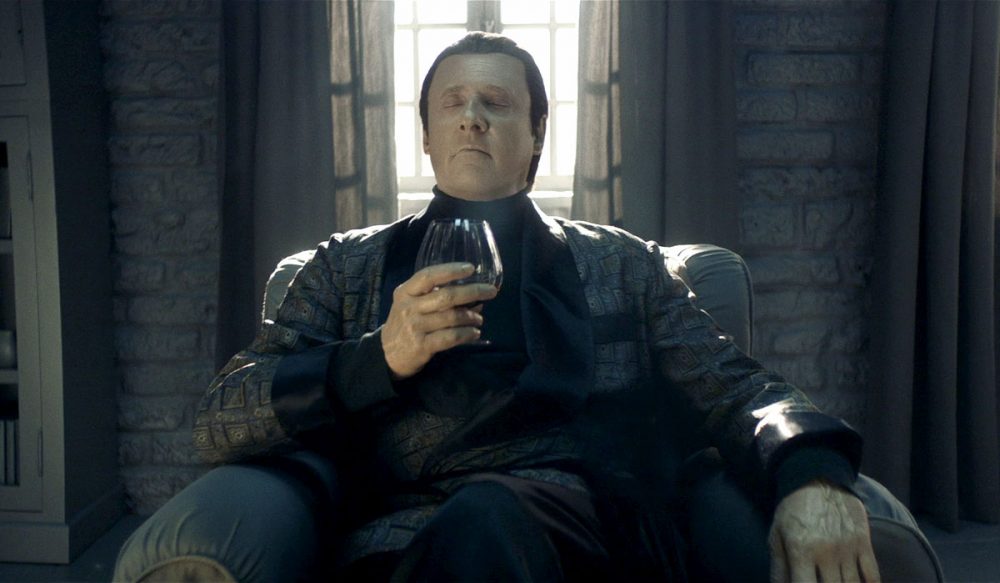
The scene, and the sentiment, are provocative and moving. Brent Spiner and Patrick Stewart are wonderful in what I imagine is the last scene they will ever share. The dramatic impact of it is completely undone by its sudden introduction. A more powerful ending was possible if the idea of Data’s survival – something teased in the early episodes by virtue of Daj and Soji – was more properly developed. Picard is haunted by Data’s death. If the android’s soul had been at stake, along with the galaxy, this final episode might have had more weight to it than the typical third act of a summer blockbuster. It might have been more Star Trek.
Picard honors Data’s wish, and in a scene that seeks mostly to revise the bitter taste of Star Trek: Nemesis, we say goodbye to Data, forever. It’s touching, appreciated and worth the nearly twenty year wait. Then Picard leaves with Soji and the rest of the La Sirena crew (including Seven!), off to their next adventure. The synth ban is lifted. The Romulans are bad guys again (but they were right! *audible groan*). Picard has a new lease on life. Engage.
Datapoints:
- Isa Briones sings the rendition of “Blue Skies” playing out Data’s swan song, and it’s gorgeous.
- In a development that is sure to make Seven of Nine fans squeal, we see her touching hands with Raffi on the La Sirena, confirming once and for all her sexuality.
- The show literally forgets about Narek after everything goes down. He’s just gone. The writing, performance and logic behind the Romulan siblings was maybe the weakest part of the show.
- The Borg cube remains of the surface of the synth planet. I can’t imagine anything bad will come of a group of synthetic beings with access to the ship of interstellar cyborgs.
- By the way, the x-B’s are still there, too. Their advocate (Picard) and their kind-of queen (Seven) I guess didn’t want to take them along?
- The Romulan supernova would seem to inform the Zhat Vash’s apocalyptic fears of the synths, but that event is mostly forgotten here at the end, and so is the Romulan plight in general.
- Jurati and Rios are officially an item, and she officially got away with murder.
- Raffi’s arc of addiction and sobriety is more or less resolved, though it feels like she just got over it. Perhaps we’ll see more of this next season.
- The synth planet, Ghulion IV, is given status as a Federation protectorate through the Treaty of Algerion, first mentioned in the The Next Generation episode “The Defector.”
- No Worf, Beverly or Geordi. Maybe next year.
Thank you all for reading! Let us know your thoughts on the finale and the season!
Darby Harn is a contributor for Screenrant, CBR.com, Star Wars News Net, and Movie News Net. He is the author of the sci-fi superhero novel EVER THE HERO. His short fiction appears in Strange Horizons, Interzone, Shimmer, and other venues.



